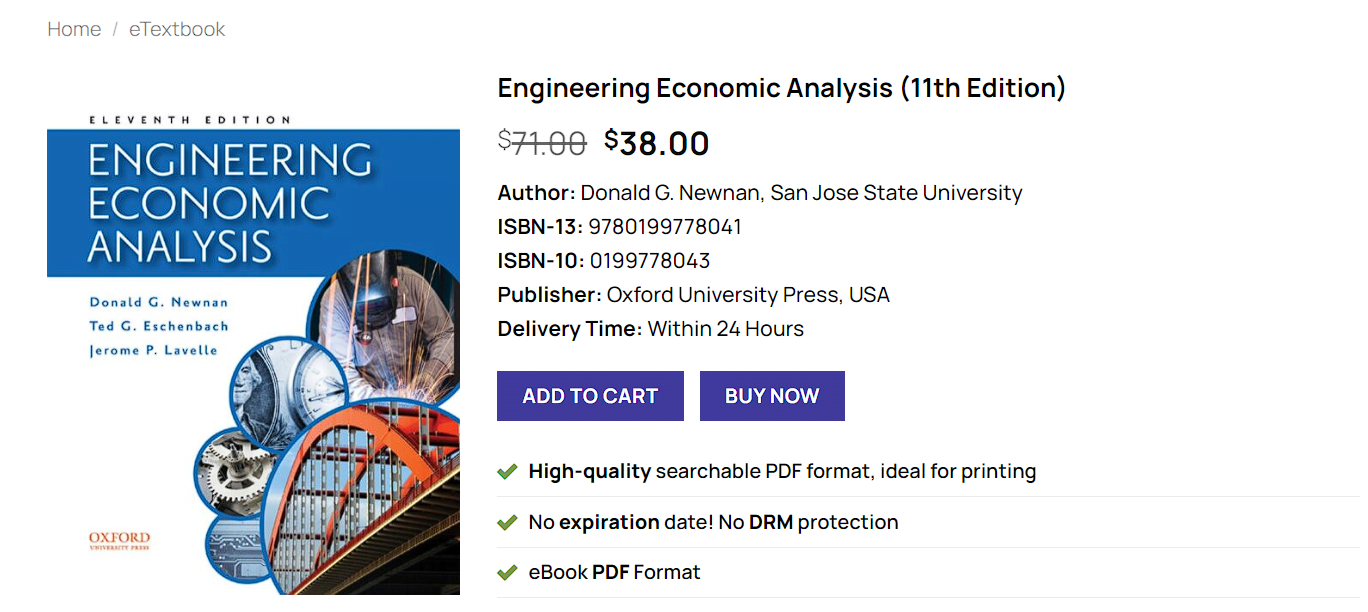Engineering Economic Analysis 11th Edition analysis is a critical aspect of the engineering discipline, enabling practitioners to make informed decisions that balance technical feasibility with financial viability. The 11th edition of ‘Engineering Economic Analysis’ continues this tradition, offering a robust framework for understanding and applying economic principles in engineering contexts. This updated edition has been meticulously crafted to address the evolving needs of both students and professionals, ensuring that the content remains relevant and accessible.
Economic analysis in engineering is essential for optimizing resource allocation, minimizing costs, and maximizing value in project execution. It plays a pivotal role in decision-making processes, helping engineers evaluate the economic implications of their designs, materials, and methods. The 11th edition of this seminal text builds on its predecessors by integrating contemporary economic challenges and solutions that engineers face in today’s dynamic environment.
One of the primary objectives of ‘Engineering Economic Analysis’ is to equip engineers with the tools and methodologies necessary to perform comprehensive economic evaluations. This includes cost estimation, financial analysis, risk assessment, and lifecycle costing. The book’s user-friendly approach ensures that complex concepts are broken down into manageable sections, making it not only a valuable educational resource but also a practical guide for real-world applications.
The latest edition features several key updates that enhance its utility and relevance. Updated examples and revised case studies provide fresh insights into modern engineering problems, reflecting recent technological advancements and market trends. Additionally, the inclusion of contemporary economic challenges, such as sustainability and global supply chain disruptions, offers readers a broader perspective on how economic considerations influence engineering decisions.
Furthermore, the 11th edition maintains its commitment to accessibility, ensuring that both students and seasoned professionals can easily grasp the material. The text is structured to facilitate learning, with clear explanations, illustrative diagrams, and practical exercises that reinforce core concepts. By combining theoretical foundations with practical applications, ‘Engineering Economic Analysis’ remains an indispensable resource for anyone involved in the engineering field.
Key Concepts and Principles in Engineering Economic Analysis
The 11th edition of ‘Engineering Economic Analysis’ provides a comprehensive exploration of essential concepts and principles crucial for informed decision-making in engineering projects. Central to this analysis is the time value of money, a foundational principle that acknowledges how the value of money changes over time. This concept is pivotal in calculating the present and future value of cash flows, enabling engineers to make economically sound decisions.
A fundamental tool in this regard is the Net Present Value (NPV). NPV measures the profitability of an investment by comparing the present value of cash inflows and outflows. A positive NPV indicates that the projected earnings exceed the anticipated costs, making the project viable. Complementary to NPV is the Internal Rate of Return (IRR), which identifies the discount rate that makes the NPV zero. IRR is instrumental in comparing the potential returns of various projects.
Equally important is the Payback Period, which calculates the time required for an investment to generate enough cash flow to recover its initial cost. Though a simpler metric, it offers quick insights into the risk and liquidity of a project. For more nuanced analysis, engineers often employ cost-benefit analysis and risk assessment. Cost-benefit analysis systematically compares the costs and benefits of different options, while risk assessment identifies potential uncertainties and their impacts on project outcomes.
Additionally, the concept of lifecycle costing extends the analysis beyond initial expenses to include all costs associated with a project over its entire lifespan. This holistic approach ensures long-term economic efficiency. To refine these evaluations, techniques like sensitivity analysis and break-even analysis are utilized. Sensitivity analysis assesses how changes in key variables affect project outcomes, providing insights into potential risks and uncertainties. Break-even analysis, on the other hand, determines the point at which total revenues equal total costs, guiding decisions on project feasibility.
These Engineering Economic Analysis 11th Edition principles and techniques are not just theoretical constructs but are actively applied in real-world engineering projects. By integrating these methods, engineers can optimize costs and maximize value, ensuring the economic soundness of their projects. Through practical scenarios and clear language, the 11th edition demystifies these complex concepts, making them accessible and applicable to both novice and experienced engineers.

